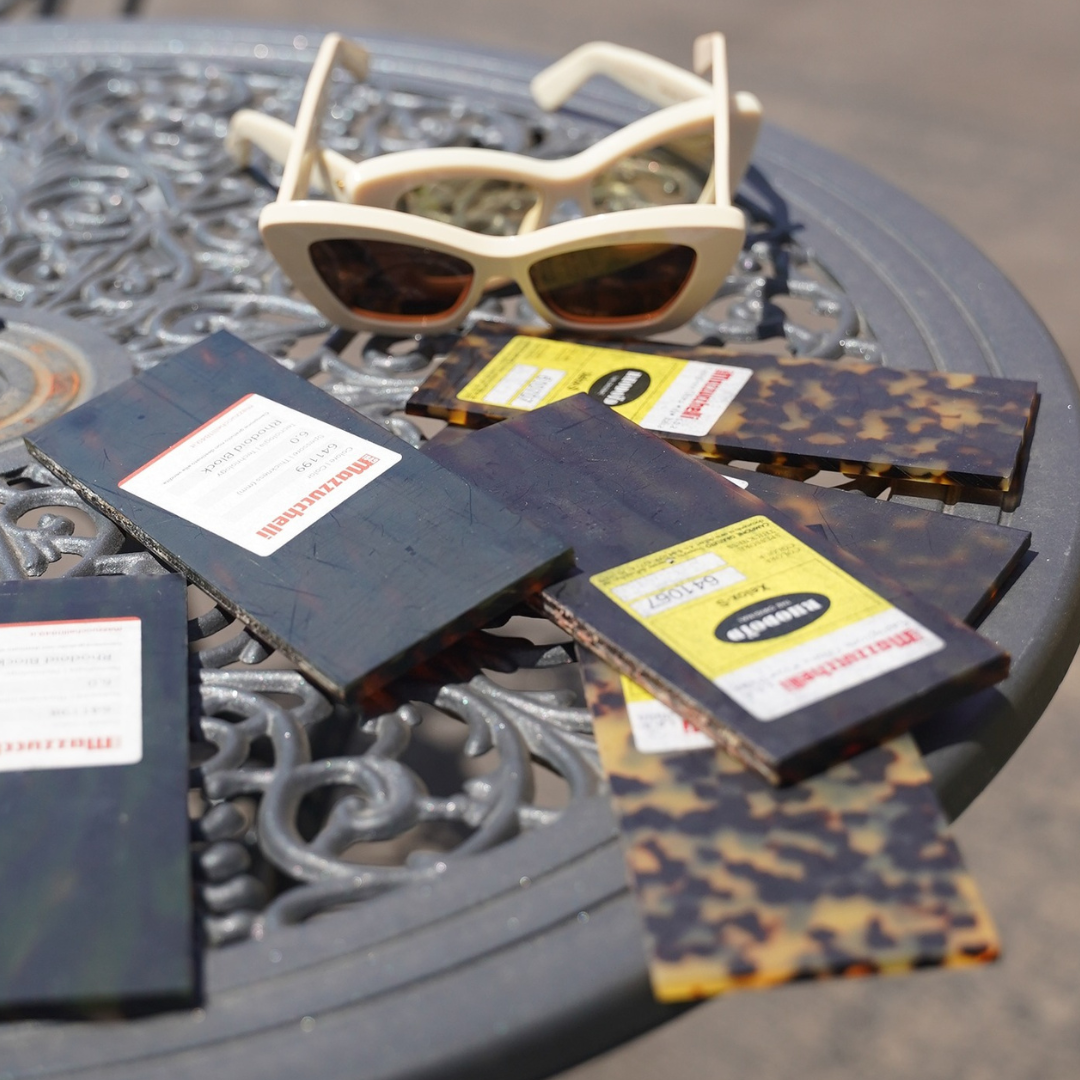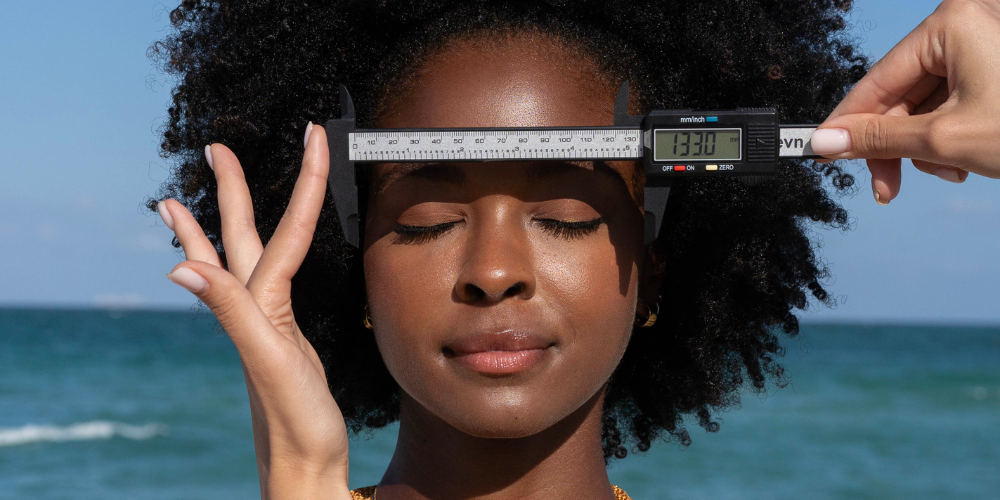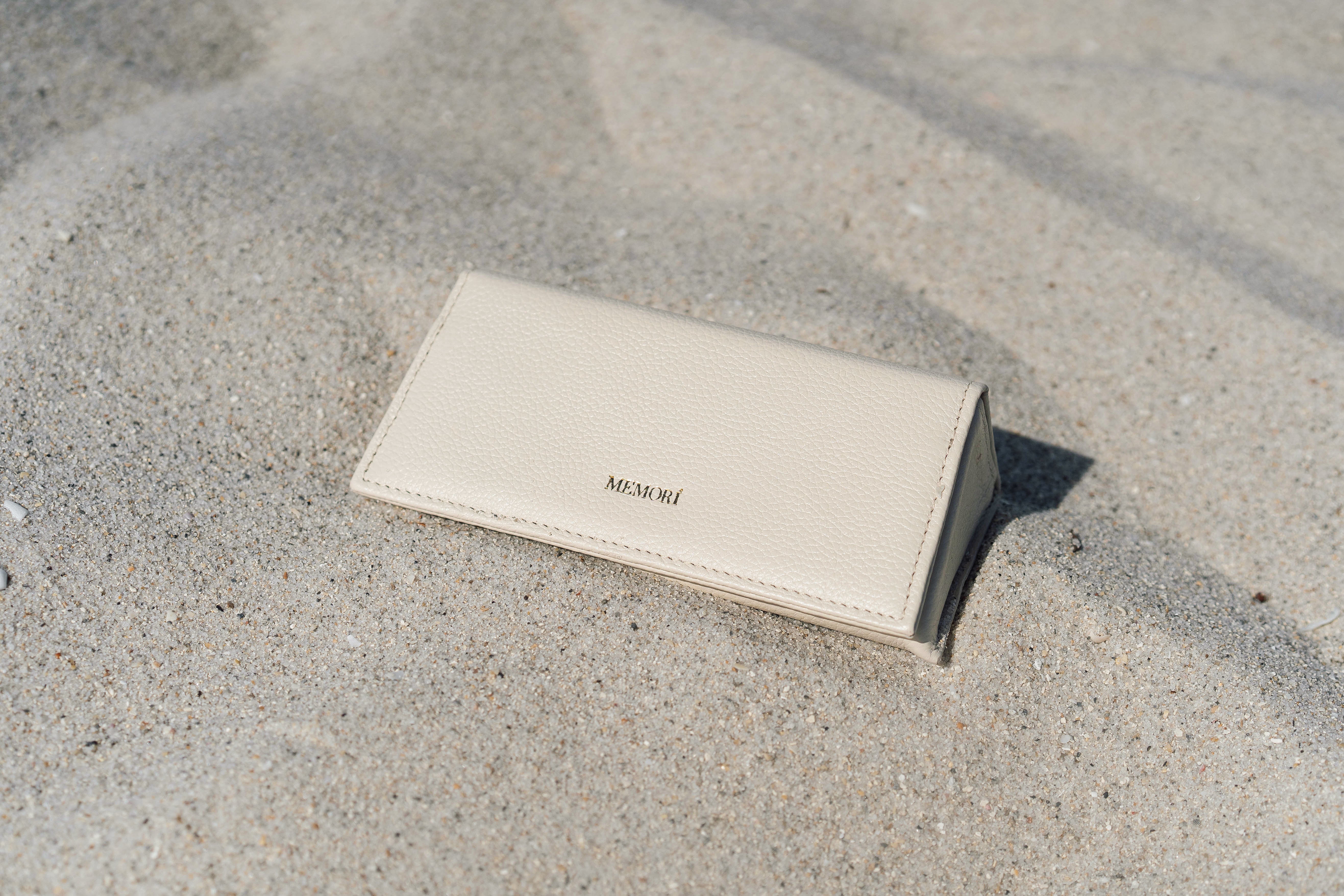Acetate is the high-end plastic material that frames of luxury eyewear are made from.
Acetate is a type of plastic, but not all plastics are acetate.
In the eyeglass world, acetate and plastic frames are not interchangeable. Acetate is the plastic material most high-end sunglasses are made of. Acetate is made from natural cellulose fibers, typically sourced from cotton or wood pulp, making it a bio-based plastic. This is different from standard plastic which is petroleum-based (derived from fossil fuels such as crude oil or natural gas).
Acetate is better for the environment, more durable, and better at holding color than regular plastic.

Pro's of Cellulose Acetate vs. Petroleum-based Plastic:
Cellulose Acetate Pros:
- Sustainable - made from natural materials and quicker to decompose
- Rich texture and color, ability to hand mix for artisan acetate sheets
- Network of small, family-owned cellulose acetate suppliers in Italy and Japan are carrying out handcrafted traditions to craft acetate for high-end suppliers
- Malleable - with relatively low heat, can shape acetate to your face shape (great to make subtle changes in temple arm shape behind ears)
- Ability to bend = less likely to break
- Durable - tumbled and finished acetate will last for years without losing its shine, with regular cleaning. Hard to scratch.
- Hypo-allergenic
- Easy to clean with mild soap
Cellulose Acetate Cons:
- More expensive than petrol-based plastics
- Will be damaged if cleaned with harsh chemicals (ex: alcohol, acetone)

photo above shows a piece of a sheet of tortoise shell patterned cellulose acetate before eyewear frames are cut from it.
Process To Manufacture Acetate:
Acetate is a plastic made from cotton wood pulp fibers. This pulp is dissolved into an acid called acetyl, which produces a fluffy white acetate flake. That fluffy powder is then turned into a clear goop, dyed, and chopped into pellets, which are hand-mixed to create a pattern and baked into acetate blocks. These acetate sheets are then purchased by high-end eyewear companies.
Note, Cellulose acetate, and even its even more sustainable cousin, Bio-Acetate, are not without any environmental harm. Despite being a high quality alternative to other plastics, acetate is still chemically intensive to make. A typical sheet of acetate is plant-based, but the other about 40% is petroleum-derived chemical UV stabilizers and plasticizers.
What to look for when selecting acetate eyewear:
- Bio-based acetate made from biodegradable plant sources.
- Acetate manufactured in Europe (ex: Mazzucchelli)
- Frames made in Europe or Japan
- Note: High-quality frames are generally going to cost a minimum of $100 USD
- Green flags: brand has a donation or recycling program, and/or a giveback element when you buy a pair. This could be planting a tree for each pair purchased, offering free recycling of old glasses, free repairs to keep you wearing them as long as possible, etc.
Silver Lining: materials and processes are constantly improving. We still have a long way to go, but thankfully the days of using real turtle shells for tortoise glasses is far behind us. As a consumer, the best thing you can do is stay educated and support businesses pushing themselves to do a step better with every collection. Spend your dollars wisely with companies using high quality materials.
Shop for longevity vs. fashion. Acetate frames, when taken care of, can easily last 10 years.









Leave a comment